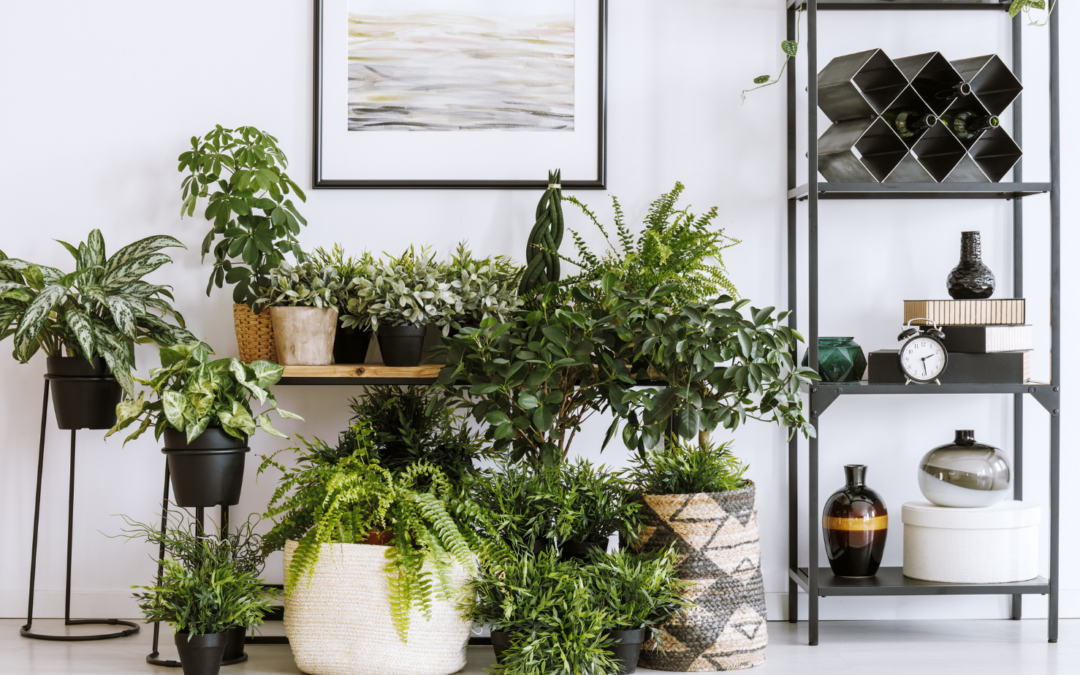Today is Houseplant Appreciation Day! While we love some gorgeous greenery as much as the next person, it’s important to note that not all houseplants are created equally. Did you know that if you or a loved one has asthma or allergies, there are houseplants that can both help and hurt common symptoms? Below we’ve outlined which green goddesses make good guests and which are better left to thrive outside.
Good Greenery
Bamboo Palm
Bamboo Palms are easy to grow indoors and bring a sense of warmth and life to any room. Not only does this plant look good, but it also does good. Bamboo Palms act as a natural humidifier. The added moisture can be beneficial to allergy and asthma sufferers – especially during the dry winter months.
Peace Lily
With its pleasing appearance of dark green leaves and white “flowers”, the Peace Lily is a popular, easy-to-care-for houseplant. An added benefit? While the Peace Lily has a calming appearance, it’s hard at work behind the scenes. According to the NASA Clean Air study, the Peace Lily successfully removed airborne Volatile Organic Compounds (VOCs), making it the perfect, pretty addition to any allergy or asthma sufferer’s home.*
Snake Plant
The Snake Plant typically features green leaves with a lovely yellow border. Their pleasing appearance paired with the fact that they can thrive in bright rooms or dark corners makes them a welcome addition to any home. For allergy and asthma sufferers, these plants come with a bonus. Snake Plants help purify the air by removing four major toxins. Plus, they release oxygen and moisture which help fight off the effects of allergens like dust and dander.*
Vegetation to Avoid
African Violets
African Violets have furry, green leaves and boast gorgeous deep purple blossoms. Unfortunately, their fuzzy leaves are the perfect place for dust to gather. These beauties also tend to have high pollen loads. The combination of pollen and dust make African Violets a no-go for allergy and asthma sufferers as they can trigger unpleasant symptoms like sneezing, watery eyes, and runny noses.
Ficus
The Ficus is an extremely common household plant, so you may be surprised to learn that its sap and leaves can be a haven for dust particles. Ficus sap also contains proteins similar to those found in latex. Toxic and allergenic agents from Ficus can wreak havoc on those with allergies and asthma through both contact and inhalation, making them a hard pass.
Ferns
Ferns don’t grow from seeds – they grow form spores. The spores released from these luscious wonders can cause an unwanted increase in asthma or allergy symptoms. Plus, in rare instances, contact with ferns can cause skin irritation that looks like a poison ivy rash.
No matter what houseplant you have, it’s important to note that moist soil can breed mold, fungi and bacteria that can cause issues with breathing. To help, ensure you’re not over-watering your plants, remove dead leaves from the surface of the soil regularly, and consider wearing gloves and a mask when working in the soil. Putting a layer of gravel on top of the soil can also help prevent mold from seeping into the air.
While a plant makes a lovely housewarming, birthday or get well soon gift, be aware of what you’re giving and who you’re giving it to. Gifting the right plant will ensure that you can rest easy, and the recipient can breathe easy.
*The Peace Lily and Snake Plant can be toxic to humans and/or pets. Be sure to keep out of reach of animals and children.





